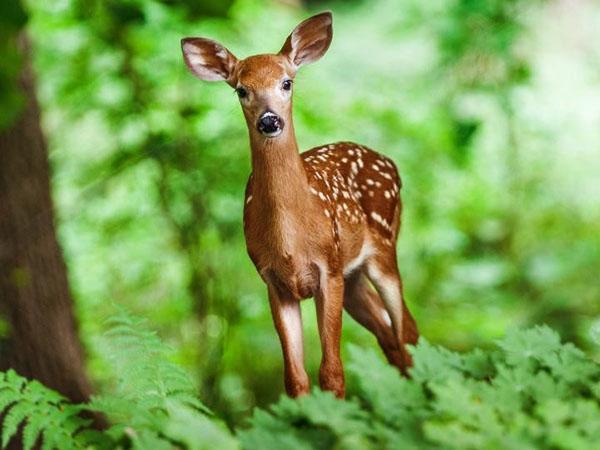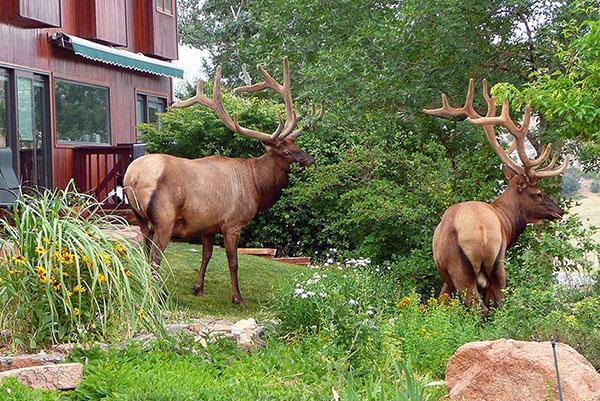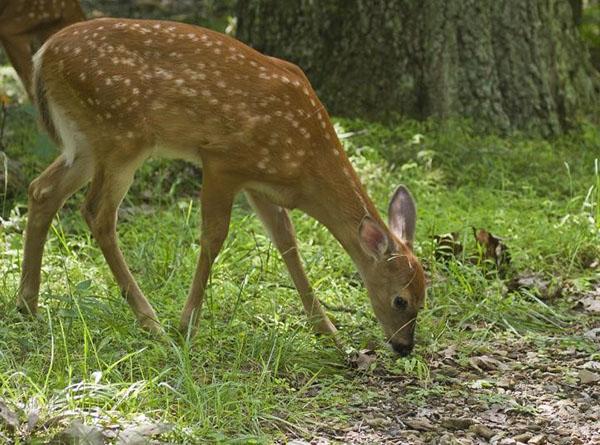How to protect your garden from curious deer
 In this article, we will share the experience of foreign farmers and tell you how you can identify the presence of deer in your garden, and how to protect yourself from them. Although they seem harmless, animals can do a lot of harm to your plants.
In this article, we will share the experience of foreign farmers and tell you how you can identify the presence of deer in your garden, and how to protect yourself from them. Although they seem harmless, animals can do a lot of harm to your plants.
Deer in the garden

While pests may visit your garden every season, spring is the time when reindeer are the most troublesome, devouring tasty shoots with a manic passion. At this time, the females either carry or feed the fawns, and the males grow antlers (about 2.5 cm per day) and try to regain the weight they spent. For a deer weary over the winter, your garden in spring is like a vegetable restaurant tempting with fresh produce.
The animals feel most comfortable at dusk (before sunrise and sunset) and love to feed on the outskirts of forests and in gardens bordering with dense trees. Being very selective eaters, deer focus only on those plants that are currently most nutritious.
How to identify a deer
 These beautiful, graceful creatures are very thin and stand out for their gray-brown skin with a reddish tint. Males have horns, but females lack them. Males weigh 90-130 kg, and females about 55-80 kg. Their height reaches 120 cm, and deer live for about 16 years in the wild. A distinctive feature of the white-tailed deer is a long tail with white fur on the lower part, which they begin to move when frightened.
These beautiful, graceful creatures are very thin and stand out for their gray-brown skin with a reddish tint. Males have horns, but females lack them. Males weigh 90-130 kg, and females about 55-80 kg. Their height reaches 120 cm, and deer live for about 16 years in the wild. A distinctive feature of the white-tailed deer is a long tail with white fur on the lower part, which they begin to move when frightened.
As a rule, animals are calm. Sometimes you can hear the grunting of the female with the calves and the grunting sound made by the male if he senses danger. Cloven hoof prints and bean droppings also indicate the presence of intruders.
Deer damage
 The pests' jaws leave ragged marks on the leaves. Animals have certain preferences for certain types of flowers, so they can suffer more than others. Plants that appear soft to the touch, contain a lot of water and are favorites on the deer menu (such as hosts, rhododendrons, roses, and buds). Pests dislike coarse, bristly and prickly leaves and intense flower aromas. However, the deer will eat anything if its hunger is strong enough.
The pests' jaws leave ragged marks on the leaves. Animals have certain preferences for certain types of flowers, so they can suffer more than others. Plants that appear soft to the touch, contain a lot of water and are favorites on the deer menu (such as hosts, rhododendrons, roses, and buds). Pests dislike coarse, bristly and prickly leaves and intense flower aromas. However, the deer will eat anything if its hunger is strong enough.
Ways to fight
 There are many methods to keep unwelcome guests from feasting in your garden. Try some of them:
There are many methods to keep unwelcome guests from feasting in your garden. Try some of them:
- Treat plantings with repellents containing dried bovine blood, egg powder and garlic. These mixtures are usually available at most garden stores, are harmless to plants, and are effective in controlling pests.
- The recipe for another natural repellent contains 1 raw egg, half a glass of milk, 1 tablespoon of dish detergent and 4.5 liters of water. Spray the mixture lightly on the plants and repeat after rain. Or mix 2 tbsp. l. Tabasco sauce with 4.5 liters of water and sprinkle on foliage and fruits (repeat after rain).
- Use scare tactics. Place some steel posts and tie metal cake tins to them with string. Even light gusts of wind will cause the structure to make sounds that scare away deer.
- Place a radio in your garden and keep it on all night. Animals will stay away from the source of the noise.
- Place an inexpensive motion sensor among the landings. When it triggers the presence of an outsider, the noise will drive the harmful visitor back into the forest.
- Pull the netting over the plants and most of the deer will pass by.
- Human hair or dog hair can be used as a natural containment method. Scatter them around the area or hang them in bags from trees.
To keep the reindeer away from the apple trees, hang nylon stockings stuffed with human hair about a meter above the ground. Change contents regularly.
Cheap soap (from a hotel, for example) scattered around the garden is a good option. Don't remove the wrapper to make it last longer. Or mix rotten eggs with water and spray around the perimeter of the area (12 pcs. Per 20 liters of water).
An experienced gardener has found a way to protect tomatoes from harmful animals. He hung up his old, unclean shoes on a support rail and watched the deer circle more around this place, while not approaching. This effect persisted from mid-May to late August. Depending on the amount of rain and the strength of the smell, this period can either increase or decrease.
Some use wolf urine and cat droppings at the edges of the garden. These smells scare away deer best. Unwashed laundry hung on a fence has a similar, albeit less effect.
Preventive measures
Prune the lower branches of the trees so that the animals have no cover. No deer will feed in an open area if there are lush bushes nearby. Always clear the yard of fallen acorns, rotten fruits and leaves, which are like an invitation to a feast for hungry deer.
Choose shrubs that deer don't like (such as forsythia and lilac bush), as well as calendula, lavender, daffodils, and snapdragons. Strong-smelling plants can be placed at the edge of the garden or near plantings that need more protection. Pests tend to stay away from poisonous and aromatic crops and plants with downy leaves.
Now you know a little more about these nifty yet pesky animals. Despite all the grace and beauty, it is better to keep the deer away from their plants and to seriously approach the issue of protection from pests. Of course, the best way was and remains a solid fence, 2.5 meters high.